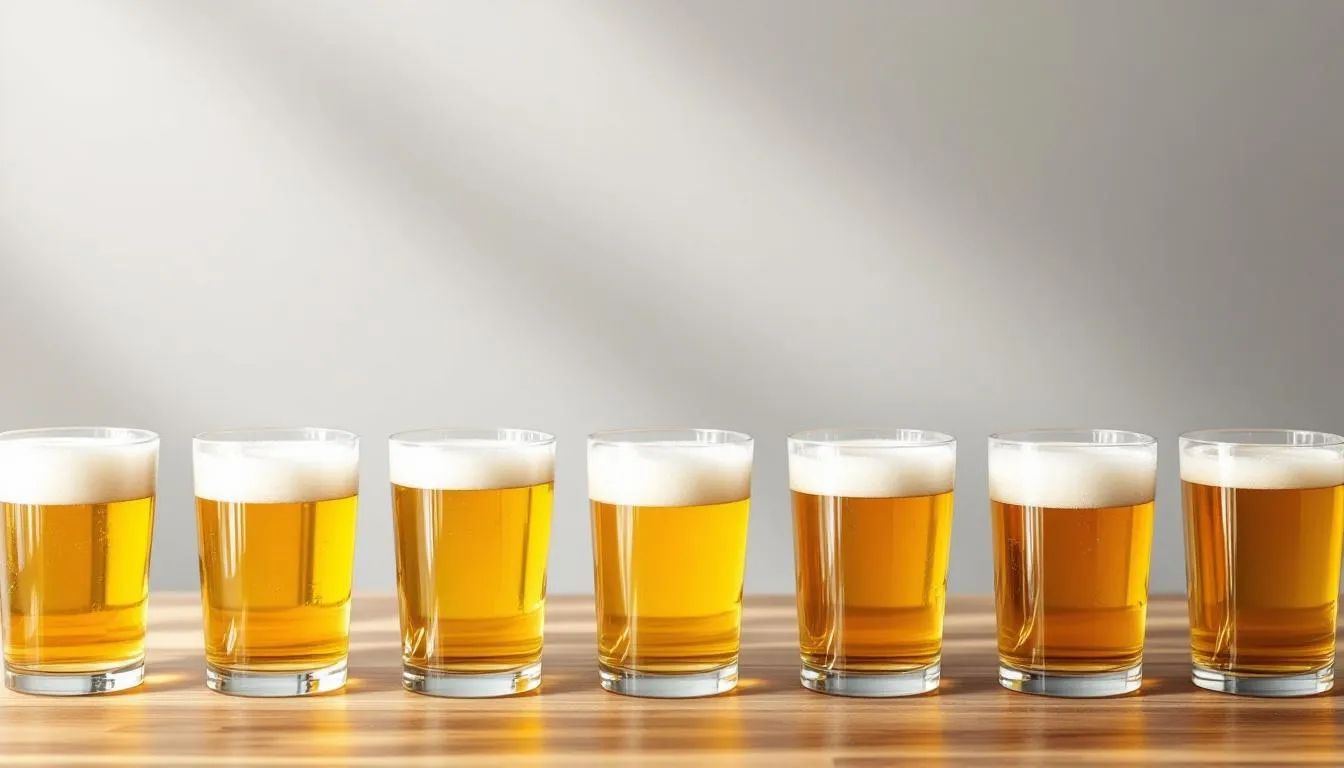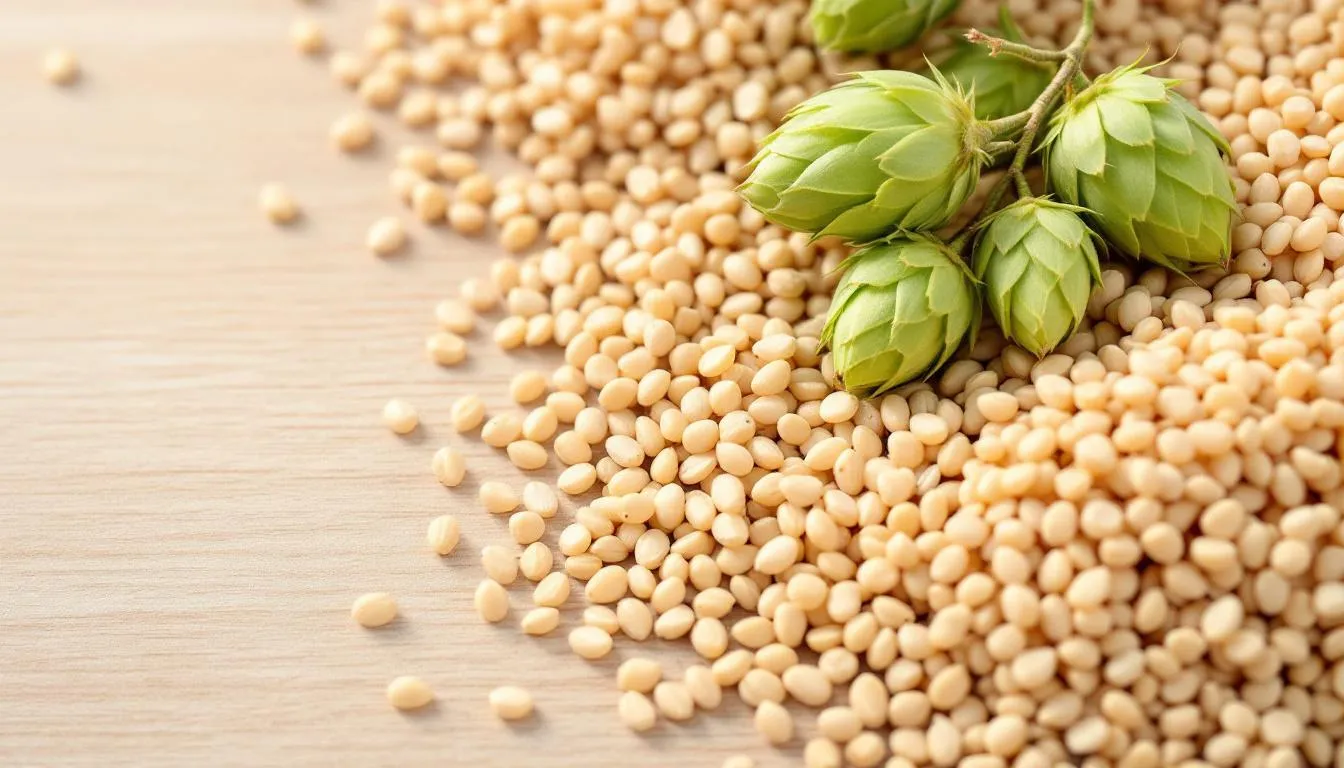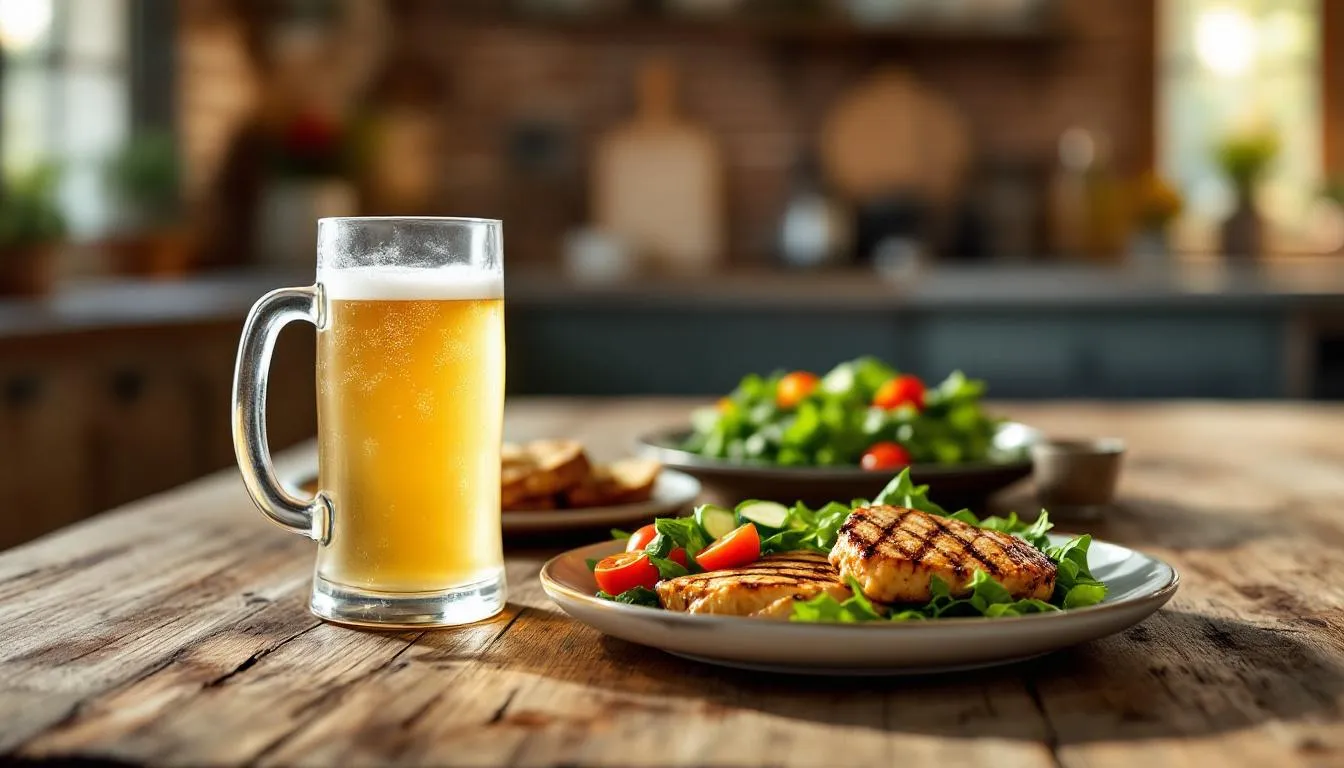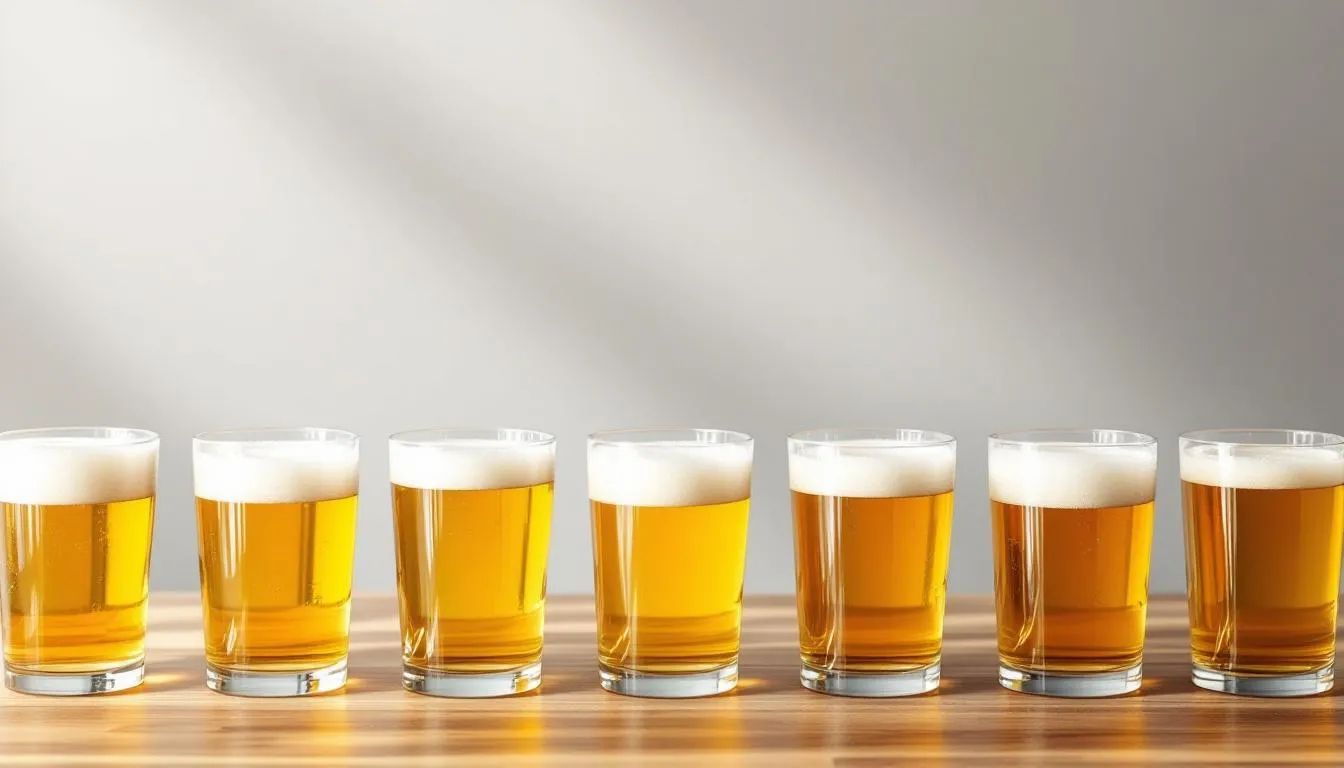Pale beer represents one of the most approachable and diverse categories in the beer world, offering everything from crisp, refreshing lagers to hop-forward ales bursting with citrus and tropical fruit flavors. Unlike their darker counterparts, these light-colored brews showcase the delicate balance between malt sweetness and hop bitterness, making them perfect for both newcomers and seasoned beer enthusiasts.
Whether you’re sipping a classic English pale ale or exploring the latest hazy IPA, pale beers have revolutionized how we think about beer. From their historical origins in 18th century England to the modern craft beer movement, these golden to copper-hued brews continue to push boundaries while maintaining their core appeal of drinkability and flavor complexity.

What is Pale Beer?
Pale beer encompasses any beer style with a light color ranging from straw-gold to light amber, typically measuring between 5-14 SRM (Standard Reference Method) on the color scale. These beers are brewed primarily using pale malts that have been dried with controlled heat, producing a lighter final product compared to traditional brown ales and stouts.
The defining characteristic of pale beer lies in its use of pale malts, which are kilned at lower temperatures to retain more enzymes for fermentation while producing those signature golden hues. This brewing technique, which evolved from English innovations in the 1600s, allows the natural flavors of both malt and hops to shine through without the masking effects of roasted grains.
Most pale beer styles maintain an ABV range of 4-6%, making them sessionable and food-friendly options. The flavor profile typically balances malt sweetness with hop bitterness, creating a harmonious drinking experience that ranges from crisp and clean to complex and aromatic.
Pale ale stands as the most common and popular type of pale beer, serving as the foundation for numerous substyles that have emerged across different brewing traditions. This beer style has become synonymous with craft brewing excellence, offering a perfect canvas for brewers to showcase both traditional techniques and innovative hop varieties.
Types of Pale Beer
The world of pale beer extends far beyond a single style, encompassing a rich variety of regional interpretations and modern innovations. Different countries and brewing traditions have developed unique approaches to pale beer, from the balanced British originals to the hop-forward American interpretations and the juicy, hazy styles that have taken the craft beer world by storm.
Understanding these distinctions helps beer enthusiasts appreciate the nuanced differences between styles and discover new favorites within the broader pale beer category.
Traditional Pale Ale
Classic British pale ale represents the original interpretation of pale beer, characterized by a balanced hop-malt profile that emphasizes drinkability over intensity. These ales typically display a golden to light amber color, ranging from 5-14 SRM, with a clean, bright appearance that showcases the clarity achieved through traditional brewing methods.
English hops like Fuggle, Goldings, and Target provide earthy and floral notes that complement rather than dominate the malt character. The result is a beer that tastes both refreshing and satisfying, with subtle complexity that reveals itself over multiple sips.
Traditional pale ales maintain an ABV range of 4.5-5.5%, making them ideal for extended drinking sessions. The bitterness levels typically fall between 20-35 IBUs, providing enough hop character to balance the malt sweetness without overwhelming the palate.
These beers often exhibit a medium body with moderate carbonation, creating a smooth mouthfeel that enhances their sessionable nature. The finish tends to be clean and crisp, leaving drinkers refreshed and ready for another pint.
India Pale Ale (IPA)
India Pale Ale represents the most hop-forward subcategory of pale beer, originally developed to survive long sea voyages to British colonies in India. Modern IPAs have evolved far beyond their historical origins, becoming showcases for innovative hop varieties and brewing techniques.
IPAs typically feature higher hop content and alcohol strength, with ABV ranges from 5.5-7.5% providing the backbone to support intense hop flavors. The increased alcohol also helps balance the substantial bitterness levels, which can range from 40-70+ IBUs depending on the specific substyle.
The flavor profile centers around intense citrus, pine, and tropical hop characteristics, with varieties like Citra, Mosaic, and Simcoe delivering complex fruit-forward aromas. American hops particularly excel in IPAs, providing the bold, aromatic qualities that define the style.
Modern IPA variations include Double IPA (higher alcohol and hop intensity), Session IPA (lower alcohol but maintained hop character), and even Black IPA (pale beer techniques applied to darker malts). Each variation explores different aspects of hop expression while maintaining the core IPA identity.
American Pale Ale
American brewers took the English pale ale tradition and revolutionized it with indigenous hop varieties, creating a distinctly New World interpretation of the style. This beer style emerged during the craft beer renaissance of the 1980s, with American hop varieties like Cascade and Centennial providing the signature characteristics that distinguish it from its British cousins.
The use of American hops brings pronounced citrus and pine characteristics that are more assertive than traditional English varieties. These hops contribute bright, resinous flavors that range from grapefruit and orange to pine needles and tropical fruit, creating a more aromatic and flavor-forward drinking experience.
Sierra Nevada Pale Ale, launched in 1980, stands as the pioneering example of American pale ale, demonstrating how American variety hops could create an entirely new flavor profile within the pale beer category. This brewery helped establish the template that countless craft brewers have since followed and adapted.
American pale ales typically maintain moderate alcohol levels (4.5-6.2% ABV) while featuring more pronounced hop character than their British counterparts. The color ranges from golden to light copper, with crystal malts often providing subtle caramel notes that complement the hop intensity.
Hazy and New England Style
Hazy pale beers represent the latest evolution in pale beer styles, characterized by their deliberately cloudy appearance and intensely juicy flavor profiles. These beers achieve their signature look through dry hopping techniques and minimal filtering, creating a smooth, creamy mouthfeel that distinguishes them from traditional clear pale ales.
The brewing process emphasizes late-addition and dry hopping with varieties like Citra, Mosaic, and Galaxy, which contribute intense tropical fruit flavors without excessive bitterness. This technique creates fruit beers that taste like fruit juice while maintaining their essential beer character.
Dry hopping, where hops are added during or after fermentation, extracts maximum aroma and flavor compounds while minimizing bitter elements. The result is a beer that delivers powerful hop character through taste and smell rather than bitterness alone.
The juicy character of these beers comes from specific hop oils that create flavors reminiscent of mango, passion fruit, and citrus. This style has inspired brewers worldwide to experiment with different hop combinations and timing, pushing the boundaries of what pale beer can achieve.
Brewing Characteristics and Ingredients

Pale malt serves as the foundation for all pale beer styles, providing the light color and clean flavor base that defines the category. This base grain, typically two-row barley or pale malt, undergoes controlled kilning at lower temperatures to preserve enzymes while achieving the desired light color. The result is a malt that contributes subtle biscuit and bread flavors without the roasted characteristics found in darker grains.
Modern pale beer production utilizes an extensive variety of hop cultivars, from traditional European varieties to cutting-edge American experimental hops. Popular choices include Amarillo (contributing orange and floral notes), Simcoe (providing tropical fruit and pine characteristics), and newer experimental hops that push flavor boundaries into uncharted territory.
Brewing techniques play a crucial role in pale beer character, with dry hopping becoming increasingly important for aroma-forward styles. Temperature control during fermentation ensures clean yeast character, while specific water profiles can enhance hop expression or malt character depending on the desired outcome.
Typical water profiles for pale beer production emphasize moderate mineral content, with some styles benefiting from higher sulfate levels to enhance hop character. Yeast strains are usually chosen for their clean fermentation characteristics, allowing malt and hop flavors to remain the focus.
Carbonation levels generally range from 2.0-2.5 volumes, providing sufficient effervescence to enhance aroma release without overwhelming the flavor balance. Serving temperatures between 45-55°F optimize the drinking experience, cold enough to be refreshing while warm enough to allow complex flavors to develop.
Flavor Profile and Tasting Notes
Pale beer flavor profiles center around the interplay between malt sweetness and hop character, creating a spectrum of tastes that range from subtle and balanced to bold and assertive. Common hop-derived flavors include citrus notes (grapefruit, orange, lemon), tropical fruit characteristics (mango, passion fruit, pineapple), and herbal or piney elements that add complexity and depth.
The malt backbone contributes essential flavors that provide foundation and balance. Typical malt characteristics include biscuit and bread notes from pale malts, with some styles incorporating crystal malts that add caramel and honey sweetness. These malt flavors create the platform that allows hop character to shine while maintaining drinkability.
Hop bitterness levels vary significantly across pale beer styles, from medium (20-35 IBUs) in traditional pale ales to medium-high (40-70+ IBUs) in IPAs. This bitterness provides essential balance to malt sweetness while contributing to the overall flavor complexity that defines each style.
The finish characteristics of pale beers range from crisp and clean in lagers and traditional ales to creamy and smooth in hazy styles. This variation in mouthfeel affects how flavors are perceived and how the beer pairs with different foods and occasions.
Aroma descriptions often focus on specific fruit and herb notes, with modern hazy styles particularly known for their intense tropical fruit aromas that can be detected from across the room. Traditional styles tend toward more subtle, balanced aromatics that complement rather than dominate the overall drinking experience.
Pale Beer vs Dark Beer
The contrast between pale and dark beers extends beyond mere color differences, encompassing fundamental variations in flavor, brewing technique, and drinking occasions. Pale beers emphasize light, fruity characteristics that showcase hop and pale malt flavors, while dark beers feature rich, roasted elements from darker malts that contribute chocolate, coffee, and caramel notes.
Seasonal drinking preferences often favor pale beers during warmer months when their refreshing, crisp qualities provide relief from heat. The lighter body and bright flavors make them ideal summer companions, while darker beers tend to dominate during colder seasons when richer, warming characteristics are more appealing.
The flavor complexity differs significantly between these categories, with pale beers highlighting citrus and tropical fruit notes that create bright, lively drinking experiences. Dark beers, by contrast, develop complex roasted flavors through specialized malt processing, creating depth through chocolate, coffee, and burnt sugar characteristics that pale beers cannot achieve.
Alcohol content considerations also vary, though both categories span similar ranges. However, the perception of alcohol differs significantly, with pale beers often seeming lighter and more sessionable even at equivalent ABV levels due to their crisp, refreshing character.
The brewing techniques for each category emphasize different aspects of the process, with pale beer production focusing on hop expression and clean fermentation, while dark beer brewing often involves specialty malt selection and the management of roasted flavors.
Food Pairing with Pale Beer

Pale beer excels when paired with grilled foods, where the hop bitterness cuts through rich, smoky flavors while the malt backbone complements charred elements. BBQ dishes particularly benefit from pale ale pairings, as the beer’s carbonation and bitterness cleanse the palate between bites of bold, saucy meats.
Spicy cuisine finds an ideal companion in pale beer, where the style’s refreshing character helps cool the palate while hop flavors complement rather than compete with complex spice blends. Thai, Mexican, and Indian dishes often pair beautifully with hop-forward pale ales that can stand up to intense flavors.
Seafood combinations highlight the citrus hop flavors found in many pale beers, creating harmonious pairings that enhance both the beer and the dish. Grilled fish, ceviche, and shellfish preparations particularly benefit from pale ales with prominent citrus characteristics.
Cheese pairings work exceptionally well with aged cheddar and goat cheese, where the beer’s acidity and hop bitterness complement the sharp, tangy flavors while cleansing the palate. The carbonation helps cut through rich, creamy textures while allowing both elements to shine.
Salad and light appetizer compatibility makes pale beer an excellent choice for brunches, light dinners, and social gatherings where food tends toward fresh, bright flavors. The beer’s hop bitterness serves as a palate cleanser between different courses, preparing the taste buds for subsequent flavors.
History of Pale Beer
The origins of pale beer trace back to 18th century England, where innovations in malting technology revolutionized beer production. Around 1642, English brewers began using coke (a coal derivative) for drying malt instead of wood, allowing for controlled heating processes that produced the first truly pale malts.
By 1703, the term “pale ale” appeared in English brewing records, marking the formal recognition of this new beer style. The development coincided with improvements in glass production that allowed drinkers to appreciate the visual clarity and appealing color of these lighter brews, spurring demand for paler beer styles.
The British colonial period, particularly trade with India, played a crucial role in pale beer evolution. The need to export beer to distant colonies led to stronger, more heavily hopped pale ales that could survive long sea voyages. These India Pale Ales became the foundation for modern IPA styles that dominate craft brewing today.
The American craft beer revolution beginning in the 1970s transformed pale beer from a primarily British tradition into a global phenomenon. Key breweries like Sierra Nevada, founded in 1980, demonstrated how American ingredients could create entirely new interpretations of traditional pale ale styles.
The modern craft beer movement since the 2000s has pushed pale beer innovation to new heights, with brewers experimenting with novel hop varieties, brewing techniques, and flavor combinations. This period has seen the emergence of hazy IPAs, session ales, and numerous other variations that continue to expand the boundaries of what pale beer can be. Amidst these trends, it can be refreshing to explore lesser-known varieties like traditional dark milds that are rare in today’s craft beer market.
Popular Pale Beer Examples
The craft beer landscape offers numerous outstanding examples of pale beer across all major substyles. Sierra Nevada Pale Ale remains the flagship American pale ale, featuring 5.6% ABV and a perfect balance of Cascade hop character with pale malt backbone. This beer helped establish the template for American craft pale ales and continues to serve as a benchmark for the style.
British classics include Fuller’s London Pride and Timothy Taylor’s Landlord, both representing traditional English pale ale characteristics with earthy hop profiles and balanced malt character. These beers showcase the original pale ale tradition while remaining highly relevant to modern drinkers.
Modern IPA examples span an enormous range, from Bell’s Two Hearted Ale (7% ABV) with its Centennial hop focus to more recent innovations like Lawson’s Finest Liquids Sip of Sunshine, which showcases tropical hop characteristics in a perfectly balanced package.
Hazy pale ales include Tree House Brewing’s Julius and Other Half Brewing’s Green City, both representing the cutting edge of modern pale beer innovation. These beers demonstrate how traditional pale beer techniques can be adapted to create entirely new flavor experiences.
Award-winning examples regularly appear in competitions worldwide, with many receiving recognition for their innovation within traditional style guidelines. Both widely available and specialty pale beer options ensure that enthusiasts can explore the category regardless of their location or budget constraints.
The diversity within pale beer continues to expand, with new breweries and established operations constantly pushing boundaries while respecting the fundamental characteristics that make pale beer so appealing. From sessionable lunch beers to bold evening pairings, pale beer offers something for every occasion and palate preference.
Whether you’re new to craft beer or a seasoned enthusiast looking to explore new flavors, pale beer provides an accessible entry point into the world of quality brewing while offering enough complexity and variation to satisfy even the most discerning drinkers. The combination of tradition and innovation that defines modern pale beer ensures its continued popularity and evolution in the years to come.


Leave a Reply